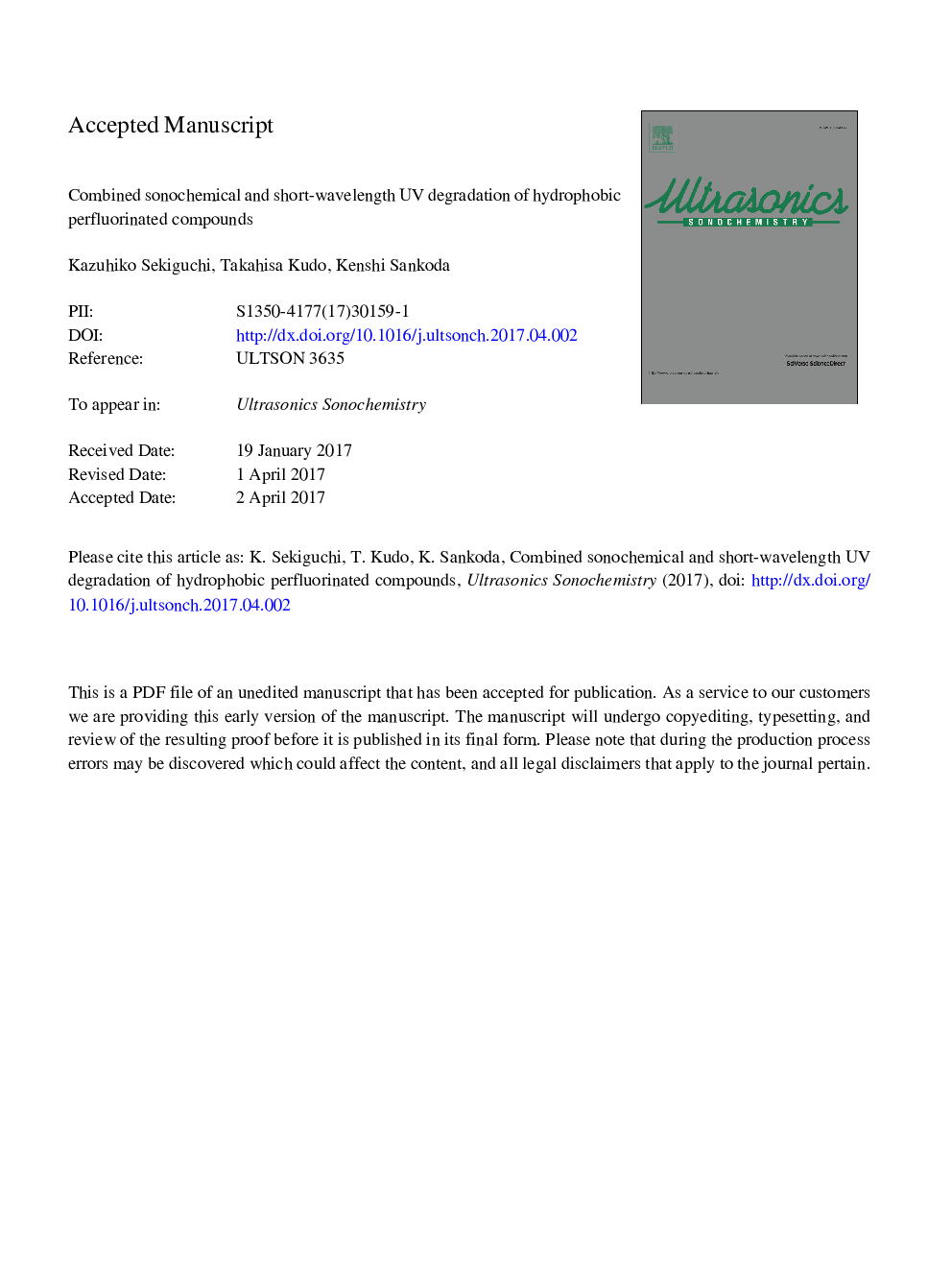| Article ID | Journal | Published Year | Pages | File Type |
|---|---|---|---|---|
| 5144534 | Ultrasonics Sonochemistry | 2017 | 23 Pages |
Abstract
Perfluorochemicals (PFCs), which are common in the aquatic environment, are toxic substances that have high chemical and heat resistance because of their strong C-F bonds. We investigated the effect of ultrasonication and short-wavelength UV irradiation on the degradation of perfluorooctane, perfluoropropionic acid, and perfluorooctanoic acid, which are examples of hydrophobic, hydrophilic, and intermediate PFCs, respectively. The results confirmed that ultrasonication was more effective for decomposing hydrophobic PFCs and UV irradiation was more effective for decomposing hydrophilic PFCs. Therefore, defluorination of the degradation intermediates was improved by a combination of ultrasonication and UV irradiation. Our results can be applied to the decomposition treatment of PFCs that have various levels of water solubility in the aquatic environment.
Related Topics
Physical Sciences and Engineering
Chemistry
Chemistry (General)
Authors
Kazuhiko Sekiguchi, Takahisa Kudo, Kenshi Sankoda,
